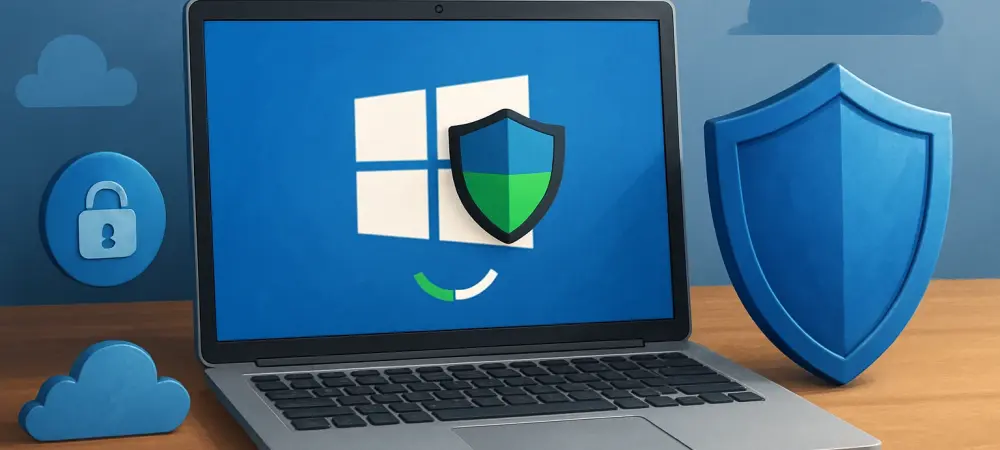The digital landscape shifted dramatically when Windows 10, an operating system still powering nearly 500 million devices worldwide, reached its end-of-support milestone, leaving millions of users facing a stark choice. Despite its retirement, many cling to this familiar platform, forced to decide whether to upgrade, adapt, or risk severe security breaches. Now, in a surprising turn, Microsoft has begun selling security updates for Windows 10 directly through its online store at $29.99 for a year of protection. This bold move raises critical questions about the tech giant’s strategy and the future of user security in an era of constant cyber threats.
This development isn’t just a footnote in tech news—it’s a pivotal moment for individuals, businesses, and even national cybersecurity frameworks. With unpatched systems vulnerable to exploitation and outdated hardware contributing to mounting e-waste, the stakes couldn’t be higher. Microsoft’s decision to monetize extended support through its store signals a new approach to managing legacy software, balancing user needs with corporate goals. The following exploration delves into the reasons behind this paid update model, the real-world implications, and the options available to users navigating this uncharted terrain.
A Surprising Shift: Microsoft’s Paid Update Strategy
Microsoft’s announcement to sell Windows 10 security updates directly via its online store caught many by surprise. After the operating system’s official retirement, the expectation was for a gradual phase-out, not a direct monetization of essential patches. Priced at $29.99 for a one-year subscription to extended security updates (ESU), this option targets users who wish to avoid the cloud-based dependencies tied to the free alternative, reflecting a calculated pivot in how legacy support is handled.
This move underscores a broader trend in the tech industry toward subscription-based models, even for critical updates. While some view it as a pragmatic way to fund ongoing support for an aging platform, others see it as a controversial step that could alienate loyal users. The paid ESU offers a workaround for those resistant to Microsoft’s push for cloud integration, setting the stage for a deeper look into why this matters now.
The Weight of Windows 10’s Retirement
The end-of-support for Windows 10 isn’t merely a technical deadline—it’s a global challenge affecting an estimated 500 million users. Without regular updates, these systems become prime targets for cybercriminals exploiting unpatched vulnerabilities. Beyond individual risks, this situation poses a threat to organizational networks and critical infrastructure, amplifying the urgency of finding a sustainable solution.
Moreover, the environmental impact looms large. As users consider abandoning outdated hardware incompatible with newer systems like Windows 11, the potential for e-waste grows. Discarded devices could pile up in landfills, exacerbating ecological concerns. Microsoft’s paid update offering emerges as a temporary bridge, but its broader implications for security and sustainability demand closer scrutiny.
Decoding the Extended Security Updates (ESU) Program
Microsoft has rolled out two distinct pathways for Windows 10 users seeking continued protection. The free ESU option requires linking a Microsoft Account and integrating with OneDrive, a mandate that has sparked frustration among users wary of cloud dependency. Alternatively, the paid ESU, available for a one-time fee of $29.99, allows a single sign-in followed by permanent logout while still delivering critical updates for a year.
This pricing structure caters to diverse user preferences but also highlights a growing tension over forced cloud adoption. For those unwilling or unable to upgrade to Windows 11 due to hardware limitations, the paid option serves as a practical stopgap. Other alternatives, such as purchasing new devices or repurposing old ones with systems like ChromeOS, further complicate the decision-making process for millions of affected users.
Security Imperatives: Heeding Expert Alerts
The importance of maintaining updated systems cannot be overstated, especially with credible warnings from America’s cyber defense agency. A specific vulnerability, identified as CVE-2025-59230, exemplifies the dangers—a local privilege escalation flaw that could enable authorized users to gain elevated access and compromise entire networks. This issue affects multiple Windows versions, including 10, 11, and Server editions, underscoring the non-negotiable need for patches.
Insights from Microsoft’s Executive Vice President Yusuf Mehdi reveal a long-term vision focused on innovation, yet immediate user concerns often center on security over futuristic features. Many express reluctance to embrace cloud-based solutions, citing privacy and control issues. These real-world anxieties, paired with stark data on cyber risks, reinforce that skipping updates is a gamble few can afford to take.
Practical Pathways for Windows 10 Users
Navigating the post-support landscape for Windows 10 requires clear, actionable steps tailored to individual circumstances. First, users should assess hardware compatibility with Windows 11—devices failing to meet stringent requirements may necessitate other solutions. Checking system specs through Microsoft’s official tools can clarify whether an upgrade is viable.
For those staying with Windows 10, the free ESU offers a no-cost shield if a Microsoft Account and cloud integration are acceptable. Alternatively, the paid ESU at $29.99 provides a year of updates without ongoing cloud ties, accessible directly via Microsoft’s store. For users ready to move on, replacing hardware or exploring alternative operating systems like ChromeOS presents viable options, ensuring security remains the top priority in any decision.
Reflecting on a Turning Point
Looking back, Microsoft’s decision to sell Windows 10 updates through its store marked a significant shift in how legacy software support was perceived and managed. It highlighted a delicate balance between sustaining user security and pushing forward with technological evolution. The varied reactions from users—ranging from appreciation for the paid option to frustration over cloud mandates—painted a complex picture of adaptation in a rapidly changing digital world. As this chapter unfolded, the critical takeaway was the need for proactive measures. Users were encouraged to evaluate their specific needs, whether by securing updates through Microsoft’s offerings or transitioning to newer platforms. Moving forward, staying informed about evolving security risks and exploring flexible solutions became essential steps to ensure safety and relevance in an ever-connected landscape.

